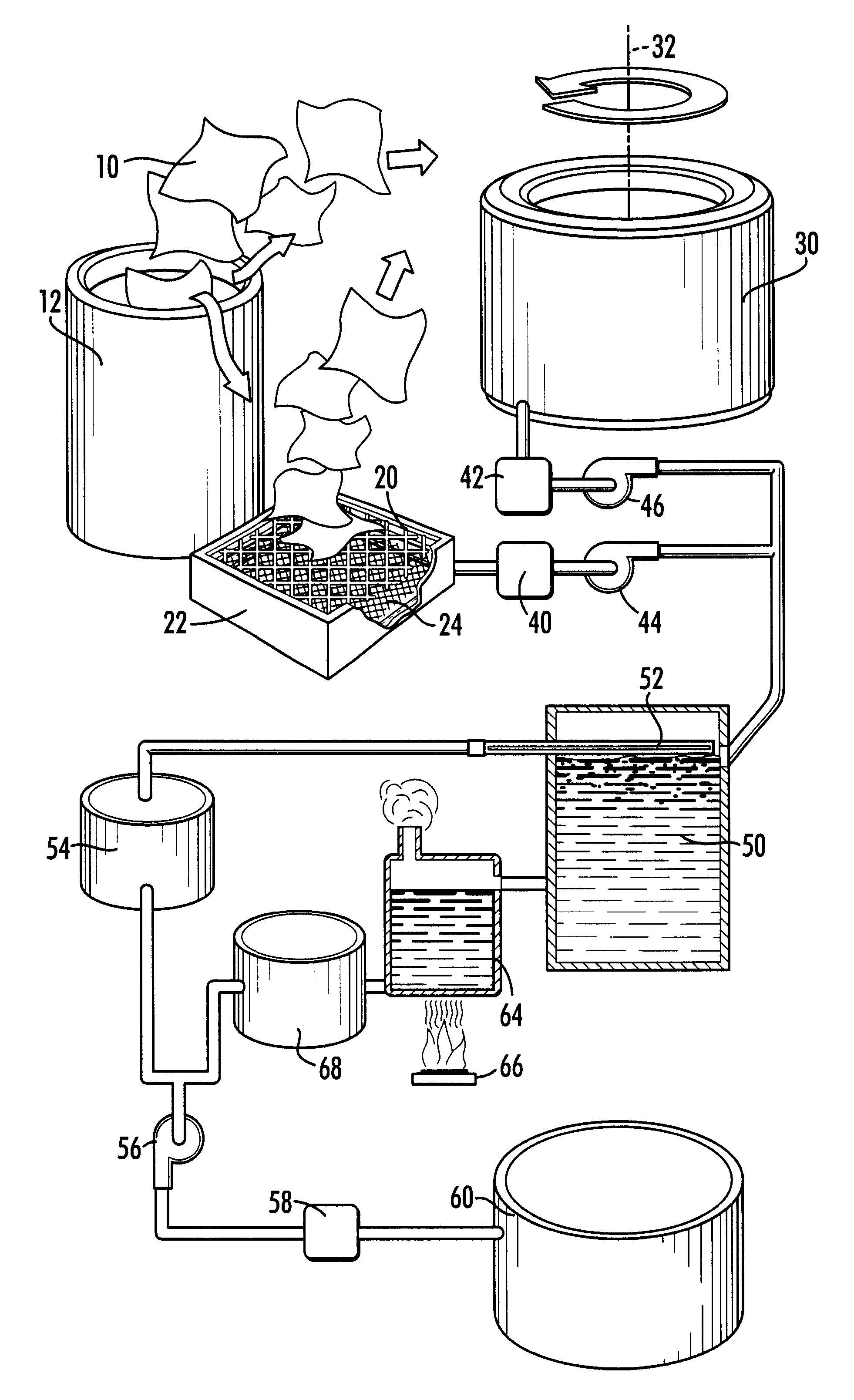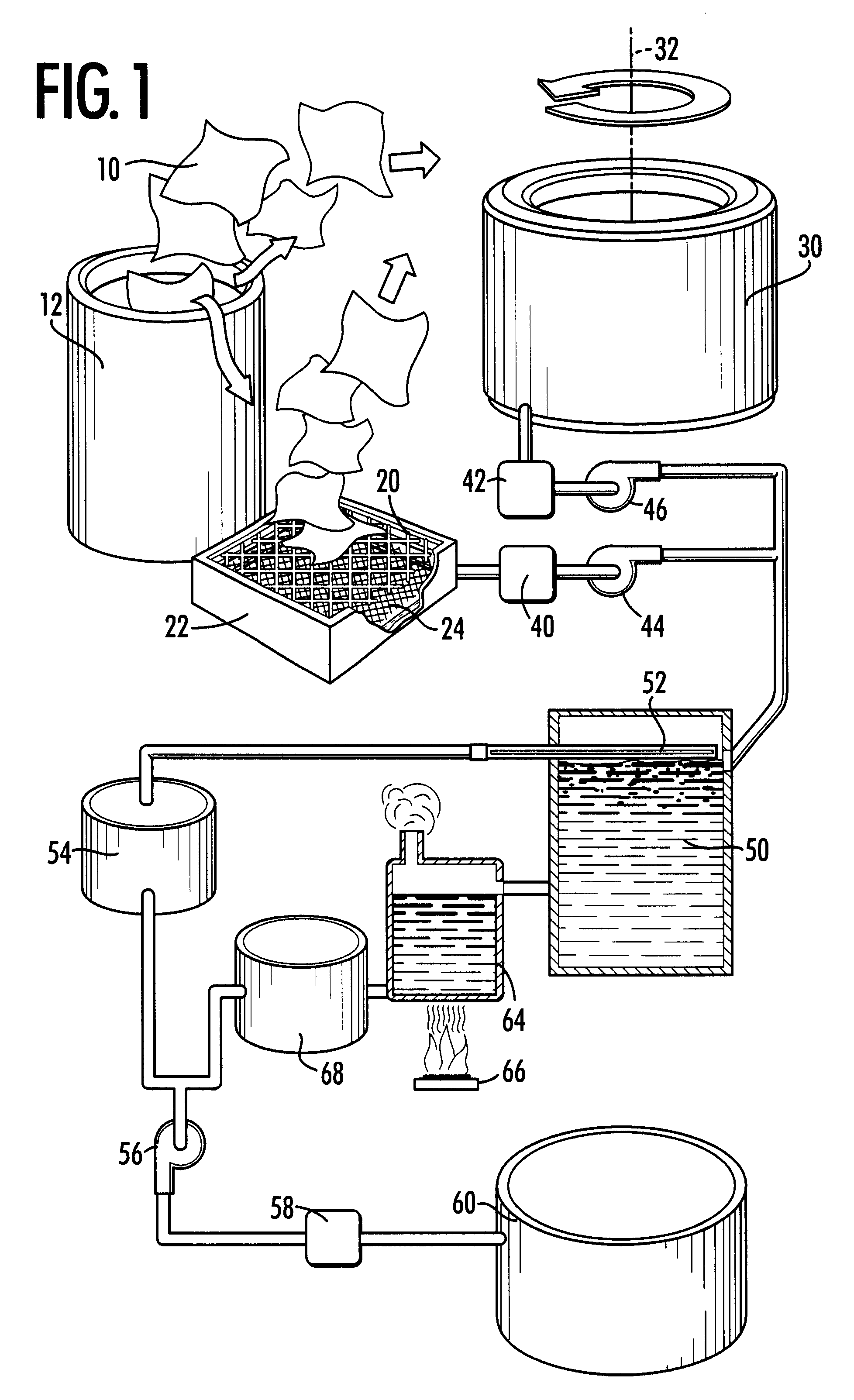Method and apparatus for cleaning oil absorbent materials
a technology of absorbent materials and cleaning methods, applied in the directions of transportation and packaging, separation processes, filtration separation, etc., can solve the problems of not obtaining the cleanest materials and recycling of absorbed oil
- Summary
- Abstract
- Description
- Claims
- Application Information
AI Technical Summary
Benefits of technology
Problems solved by technology
Method used
Image
Examples
Embodiment Construction
Referring now to FIGS. 1 and 2, there is shown a schematic diagram of a method and apparatus for separating oil from oil-absorbent materials according to a preferred embodiment of the present invention. Oil-absorbing materials include synthetic and natural, woven and non-woven pads and tubular "socks" that are customarily used in machine shops and metal fabricating plants to absorb spilled or leaking lubricants. These materials will be referred to herein and in the claims that follow as "pads" for convenience. Also, the present system is not intended for use with and will not work with solvents, only lubricants.
The goal of the present system is recycling; in particular, the present system recovers oil for recycling and cleans the oil-absorbing pads for reuse. The more effective the present system is, the more oil it recovers that can be recycled, the cleaner the oil-absorbing pads are and the less hazardous waste it generates. The first component of the present process is directed t...
PUM
| Property | Measurement | Unit |
|---|---|---|
| particle size | aaaaa | aaaaa |
| temperature | aaaaa | aaaaa |
| composition | aaaaa | aaaaa |
Abstract
Description
Claims
Application Information
 Login to View More
Login to View More - R&D
- Intellectual Property
- Life Sciences
- Materials
- Tech Scout
- Unparalleled Data Quality
- Higher Quality Content
- 60% Fewer Hallucinations
Browse by: Latest US Patents, China's latest patents, Technical Efficacy Thesaurus, Application Domain, Technology Topic, Popular Technical Reports.
© 2025 PatSnap. All rights reserved.Legal|Privacy policy|Modern Slavery Act Transparency Statement|Sitemap|About US| Contact US: help@patsnap.com



